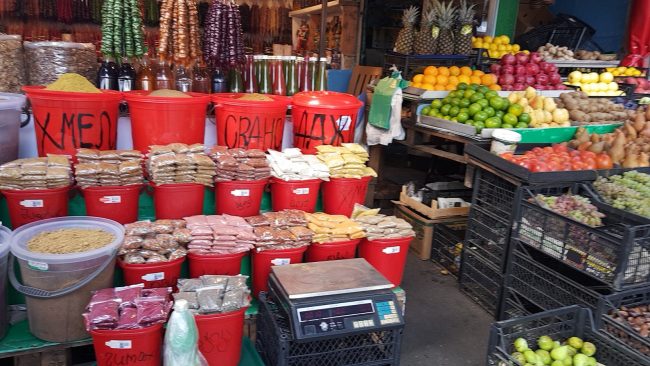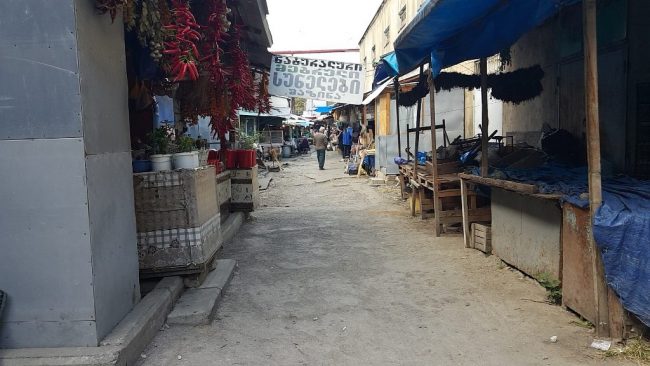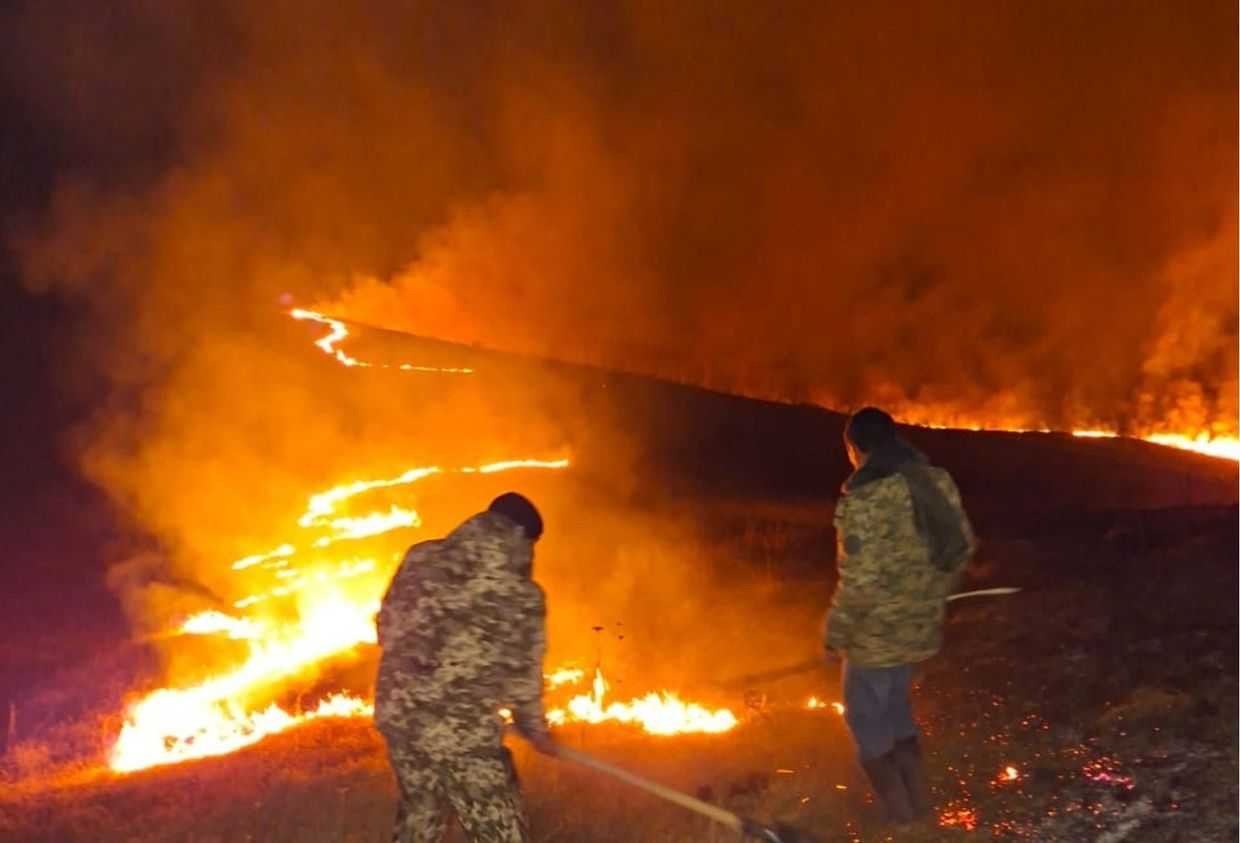

Georgians’ abnormal levels of exposure to lead show that the food they eat and the air they breathe might be toxic — all while the authorities seem reluctant to address the problem.
‘I guess my blood is Georgian now, [with a] lead level 3.4 times higher than it should be. My doctor was very confused’, wrote Tbilisi-based German actress, Mareike Wenzel, on her Facebook page in August.
Wenzel told OC Media her test results indicated a level of 95.4 milligrammes per litre (mg/l) of lead in her bloodstream, far higher than the recommended safe level of under 28 mg/l.
She emphasised that while it was not possible to pinpoint the specific source of the lead, it was clear that something in her environment must be contributing to such a high level. She made the post in an effort to draw attention to the fact that others living in Georgia, like her, may face a health risk from lead contamination in their blood.
Laura Thornton, the Resident Director of the National Democratic Institute (NDI) in Georgia, made a similar post on her Facebook page in July, stating that she and other acquaintances of hers living in Georgia had discovered ‘unsafe’ and even ‘seriously dangerous’ levels of lead in their blood, and she urged others to get tested.
The Estonian Ambassador to Georgia, Kai Kaarelson, and other members of the diplomatic service, followed suit, which led to them discovering ‘dangerous’ lead levels in their blood; the level of lead in one member of the embassy’s staff reached as high as 313 mg/l.

In 2017 fears over Georgian products being contaminated with lead prompted the New York City Department of Health and Mental Hygiene to warn residents against consuming Georgian spices such as marigold, Svan salt, ajika powder, khmeli suneli, and others, as they were more likely to contain high levels of lead. The New York Authorities continue to advise against the consumption of these products and have urged those who consumed them to have their blood tested for lead.
When the scandal broke, the Georgian National Food Agency initially responded by berating local media for ‘misinforming’ the public, but later confirmed the problem existed.
In July 2017, consumer safety portal momxmarebeli.ge published the results of tests commissioned by the National Food Agency in 2015–2017: they had found 7.06 mg/kg of lead in paprika, 5.96 mg/kg and 6.38 mg/kg in dry ajika, 5.60 mg/kg in khmeli suneli, all exceeding the maximum 5mg/kg permitted by law.
The contaminated products all came from the town of Zugdidi, in western Georgia’s Samegrelo region.
In February, the government reacted to the findings by introducing a two-year ban on the production and sale of spices by individual sellers. The authorities allowed traders to sell spices only when ground in front of the customer.
The government also obliged business owners to sell only sealed and labelled spices. Within the same National Food Agency study, lead was also discovered in other products such as meat, milk, bottled water, beetroot, coffee, fish, eggs, and salt.
The National Food Agency told OC Media that they conducted tests in 2018 which ‘revealed three violations’, but did not provide further details.
Study on lead underway
Lead is a naturally occurring toxic metal that concentrates in blood and can cause poisoning. It is usually found in food, construction materials and industrial paint, and can also be found in toys, furniture, ceramic dishware, and jewellery containing leaded paint.
Chronic exposure to lead can result in damage to internal organs and the nervous system and can be especially harmful to pregnant women and to the nervous system and brain development of young children.

Buildings built before the 1970s in Georgia usually have paint containing lead. Experts have recommended that these buildings be re-painted with lead-free paint, or else that the old paint be scrubbed off in order to reduce the risk of contamination.
In 2012, Georgia adopted a law on Product Safety and Free Movement, but there is no supervisory body inspecting chemical products; additionally, many products like paint or toys have no labels in Georgian, which means consumers are unaware if they contain lead.
In Tbilisi, it costs around ₾70 ($28) to have hair tested for lead and around ₾100 ($40) to test for lead levels in the blood, making it unaffordable for many. Even if these tests were reasonably priced, treating lead poisoning would be ineffective without identifying the source of exposure.
Data from the Georgian Scientific Research Center of Agriculture showed that Georgians’ dietary exposure to lead is much higher than in European countries.
In a 2015 study by Georgia’s National Centre for Disease Control, of 255 child patients aged 2–5 tested, 33% had over 50 mg/l of lead in their blood — a value after which the American Centre for Disease Control and Prevention, among others, recommends ‘public health action to be initiated’.
A report in July by the Georgian Scientific Research Center of Agriculture (SRCA) confirmed that in adults and children, nutrition-based exposure to lead is ‘six times higher’ than the European average. The centre made several recommendations to the government, including conducting regular epidemiological studies among pre-school children and women aged 20–40, continuous monitoring for lead in the most frequently consumed products (bread and pastry, meat, dairy, and fruit and vegetables) as well as animal feed, and to prolong the 2017 temporary regulations on the sale of spices. They also noted ‘the urgent need’ for more representative studies.
Now Georgia is just months away from having the first generalised data about nationwide lead exposure.
Maia Kurtsikidze from UNICEF Georgia told OC Media that: ‘as reports about high lead levels appeared in Georgia recently, the National Centre for Disease Control requested that a component of blood tests among children [be added to the government measures]’.
UNICEF Georgia’s Multiple Indicator Cluster Survey (MISC), which is supported by over eight international organisations, collects data to measure against a number of indicators concerning child welfare.
According to UNICEF’s Tbilisi office, for the first time this year, the survey will also check children’s blood for lead levels by taking samples from 1,500 children aged between 2–7 years old. Given that over 14,000 Georgians household will be surveyed throughout Georgia, Kurtsikidze says that the study will be representative enough for them to draw conclusions on the general levels of lead among the population.
Georgia’s National Statistics Office (Geostat) is responsible for carrying out the fieldwork for the survey. Tengiz Tsekvava of Geostat notes that the results will generate data about lead contamination, but the actual sources of it will be a matter for a separate study.
‘Only after we have nationwide reliable data the on levels of lead will the National Centre for Disease Control be able to follow up and conduct an in-depth study according to specific geographical areas’, Tsekvava told OC Media. The results of the survey are expected next spring.
Lead is in the air
On 22 September, several hundred people protested in front of Tbilisi’s Government Chancellery building about the city’s poor air quality. Some carried signs which read ‘Children can’t breathe’ and ‘My city kills me’. Many protestors brought along their children. They urged authorities to make technical inspections of cars compulsory, renew the city’s aging bus fleet, and regulate construction sites that pollute the air with dust.
Tamar Basilia, the organiser of the rally, told OC Media that while she did not know much about the quality of the fuel sold in Georgia, she did not trust the authorities’ claim that there is no lead in the air.
In a recent report, advocacy group Green Alternative said that despite new automatic air monitoring stations being installed nationwide, the National Environment Agency was failing to provide the public with a comprehensive picture of the levels of air pollution in Georgia.

‘Our primary demand is to stop cars that emit excessive exhaust fumes. We’re also calling for a more efficient public transport system be put in place’, Basilia said.
Since 2017, Georgia has moved to using a less environmentally-harmful standard of fuel known as the ‘Euro 5’ standard, which reduces nitrogen dioxide emissions to 180 mg/km. Currently, it’s not compulsory for vehicle owners to have a catalytic converter installed on their car — a device that significantly reduces harmful emissions by chemically converting toxic gases.
Over the summer, the Tbilisi-based Union of Sustainable Development (known as EcoVision) conducted a comparative study of older and newer vehicles using the same fuel, which confirmed that the problem lies mostly with older cars that have no catalytic converter.
EcoVision is also calling for it to be mandatory for vehicles to undergo regular technical inspections, as is the norm in most of Europe. The Georgian authorities have been gradually introducing inspections for different types of vehicles since January of this year, and from 2019, regular checks will be compulsory for all cars older than four years.
Referring to the findings of the EcoVision study, Noe Megrelishvili, head of the Ambient Air Protection Service at the Georgian Environment Ministry, underlined that air pollution was not a major contributing factor to the level of lead contamination in Georgia. He also ruled out lead in motor transport fuel as a cause. According to Megrelishvili, leaded petrol was banned in Georgia in 2005 and the fuel is controlled both at petrol stations and on the border.
EcoVision and the Ambient Air Protection Service do not differ in their conclusion that nitrogen dioxide, emitted mostly by outdated and unroadworthy motor vehicles, is the biggest air pollutant. Nevertheless, the most important finding from the EcoVision study was the confirmation of lead in easily inhalable airborne particulates that cause diseases. These particles are known by their technical names of PM2.5 and PM10, which means they measure a maximum 2.5 micrometres and 10 micrometres in diameter respectively. A high concentration of these particles, otherwise known as total suspended particles, was identified near construction sites.









